Flashback Feminism: Phyllis Birkby and Women's Environmental Fantasies
By Stephanie Schroeder"It appears that if you were a man, you should be studying architecture."
With that dismissal, in 1948 Noel Phyllis Birkby’s suburban New Jersey high school career counselors squashed her career aspirations. Based on their rigid notions of gender, they shunted her desire to build, guiding her into the more "feminine" study of art despite her aptitude for and interest in architectural and environmental design. Birkby's career in architecture was almost derailed even before it began. But, regardless, her commitment to championing women in the profession while critically examining all aspects of the “man-made” environment would soon be revealed.
When Birkby returned to New York City in the early 1950s after spending one year at the Women's College of the University of North Carolina, she had a serendipitous encounter with a female architect who inspired Birkby to pursue her profession.
After Birkby enrolled in Cooper Union’s architecture program in 1959, the next five years entailed a busy combination of studying architecture at night and working in administrative positions by day in the offices of the architects Henry L. Horowitz and Seth Hiller. She earned her certificate in architecture in 1963 and completed a Masters in Architecture at Yale in 1966 where she was one of only six women in a class of 200. At that time, there were about 1,500 registered female architects and roughly 35,000 male practitioners in the US. While Birkby's entry into the world of architecture was delayed, she quickly made a name for herself as a visionary.
Birkby worked as a senior designer at Davis Brody and Associates beginning in 1966 until she opened her own practice in 1972. While at Davis Brody, she designed the Waterside Plaza that sit along the Hudson River in Manhattan and the Long Island University Library Learning Center in downtown Brooklyn. She described this building as "designed more as a fabric than as a building."
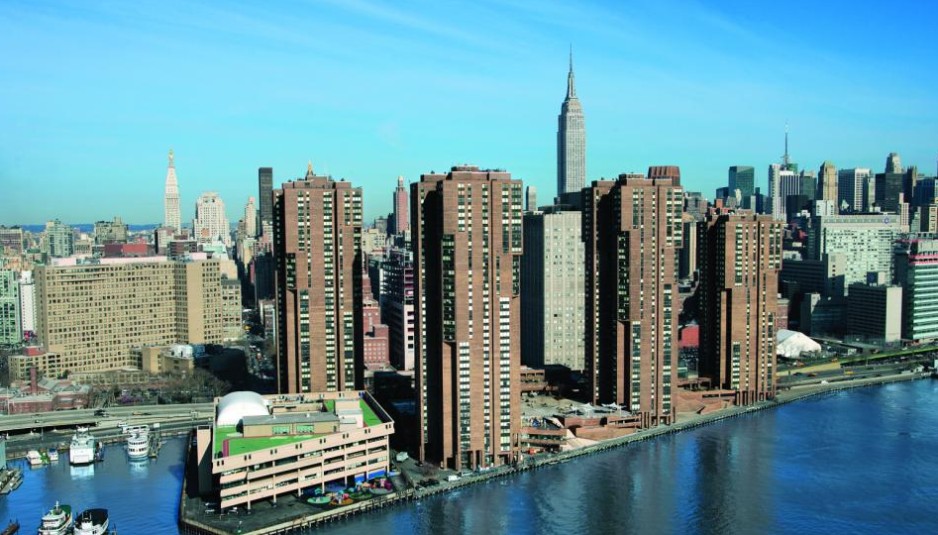
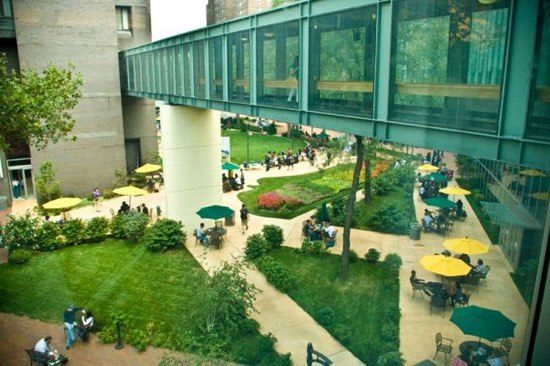
The metaphor of weaving and knitting appears repeatedly in Birkby's writings. It is not a coincidence that knitting and weaving are considered “women's work” and therefore seen as ornamental, extraneous to architectural design. As with devaluation of women in many spheres, women's ideas for and concerns about the built environment are often not considered relevant or important by many architects, regardless of gender. Once admitted to the field, Birkby continued to resist conforming to architecture’s masculine norms.
Birkby conceived her idea of a gendered analysis of the built environment during the height of the Women's Liberation Movement in the early 1970s. Birkby moved in circles with prominent feminists of the time. Along with Kate Millett, Barbara Love, Sydney Abbott, and other high profile feminist activists, she took part in "CR One," the earliest consciousness-raising group in New York City, which helped women more fully understand the systemic oppression and everyday sexism they encountered
Redefining and expanding environmental parameters was of the utmost concern to Birkby. Her research, teachings, and writings investigate the origin of design itself. What environments would women create, and how would women organize those environments if they had carte blanche to do so?
Design for and by women would be Birkby’s lifelong pursuit. "This ongoing project evolved from my participation in the design of a women's commune in New England. Questions of appropriate forms, spaces and symbols were raised and we asked each other if women have unique sensibilities that they bring to the process of designing their own environments," Birkby wrote in her notes for an article on the topic of women and the built environment. She indicated that this question had also recently been raised among design professionals in terms of "Do women design differently than men?" She concluded that whether or not this was true, architectural education conditioned women to confine themselves to "male-defined processes in a male-dominated atmosphere and are apt to become male-identified in their approach to design problems."
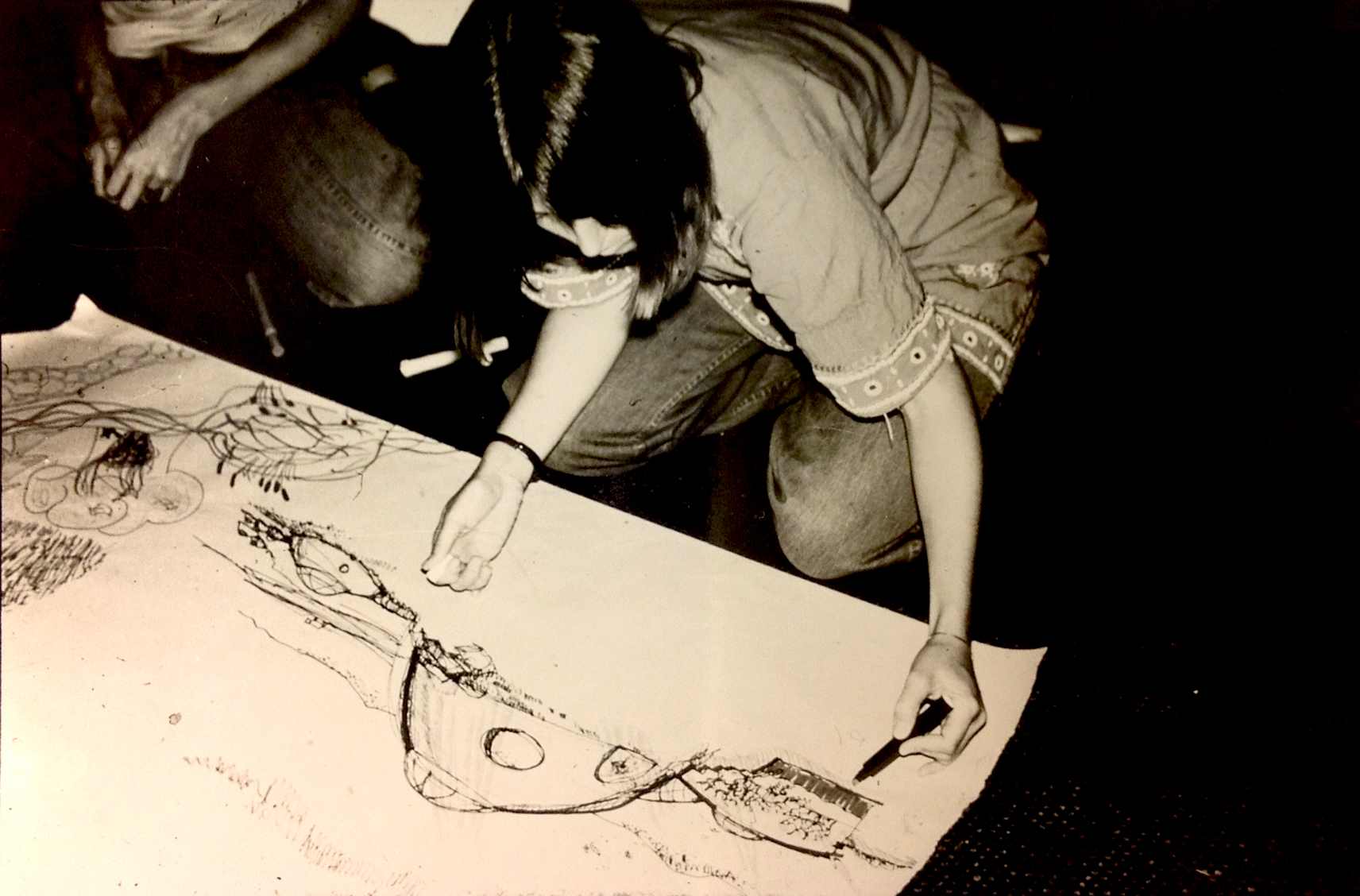
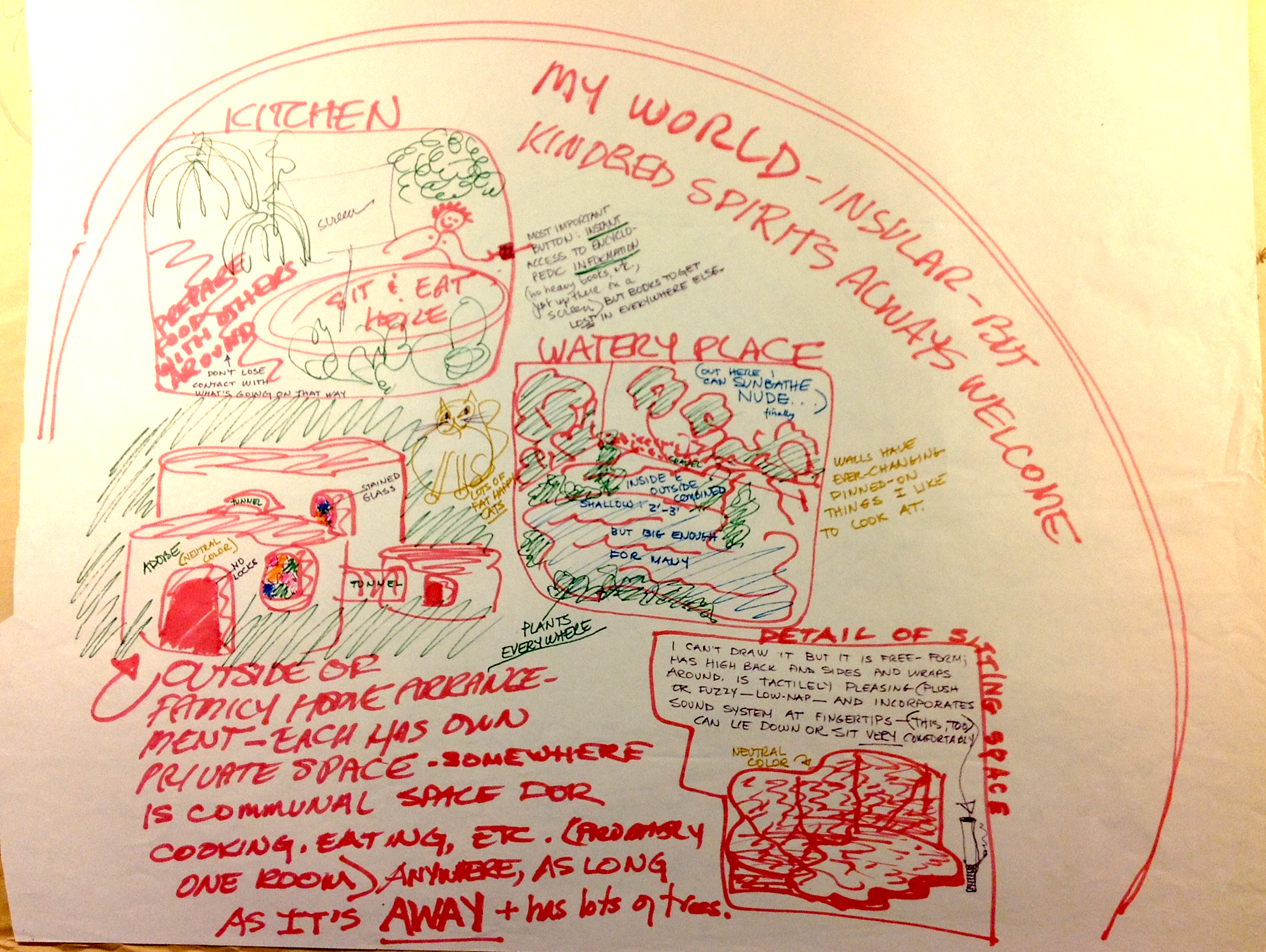
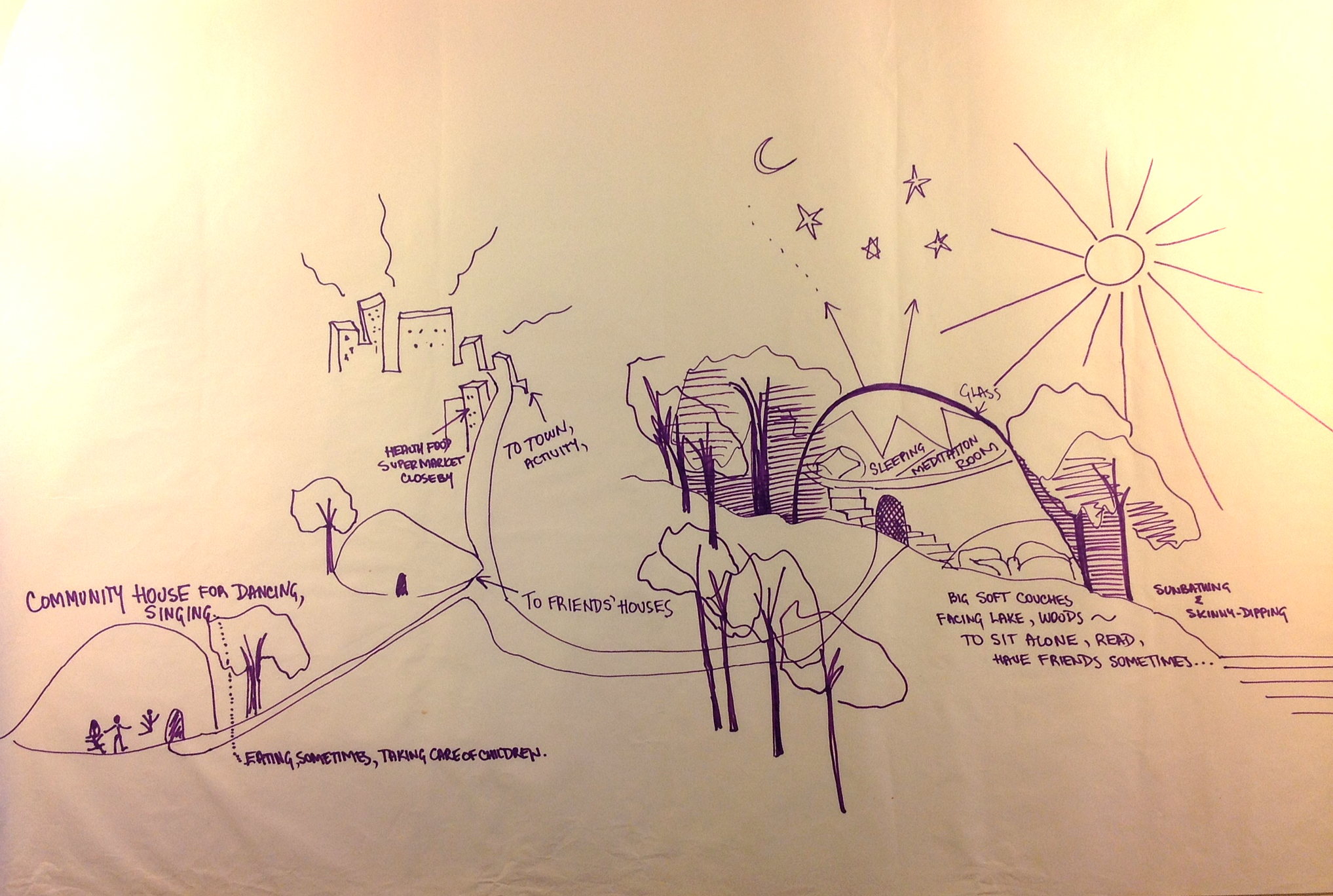
Participants in Birkby's environmental fantasy workshops in the mid-1970s were asked to imagine their ideal living environments by abandoning all constraints and preconceptions. The workshops consisted of sharing and recording women's fantasies, in drawn form, about how they wanted to live, eat, sleep, work, make love, make friends, spend time alone, learn, walk, garden, relax, think, and be. Birkby held her program of environmental fantasy workshops with women of diverse backgrounds. Deb Edel, a co-founder of the Lesbian Herstory Archives, remembers attending an environmental fantasy workshop spanning several days in Birbky's home sometime in the late '70s: "About five or six women were in attendance and we discussed how we wanted to use (and reuse) the space in which we were currently living." According to Edel, "Birkby tried to get across why we don't have to hold space in traditional ways or in ways designed by men for us."
An original outline of the Women's Environmental Fantasies curriculum indicates those who would be participating were "older women, housewives, female kids, nuns, career women, lesbians, straights, writers, painters, doctors, secretaries, factory workers, mothers, daughters, sisters, grandmas." The next section of the syllabus asks why these women's ideas and opinions were important. The answer was, in short, "Because no one ever asked us.”
Edel, who was in graduate school studying social work at the time, says she has always been interested in environments and spaces. She remembers doing exercises in the workshops that included drawings and brainstorming about public spaces such as waiting rooms and restrooms, how they might be rearranged for a higher level of comfort and to be more warm and friendly. The focus was on the nontraditional. "[Birkby] helped us to look at why we were doing the things we were doing in terms of space. It makes me rethink how I use space still...that corners are okay and comfortable, that the types of spaces most people move away from can be useful, and how lighting alone can change the feeling of a room."
In another outline for the Women's Environmental Fantasies workshop, Birkby indicates fantasy was also used as a consciousness-raising technique to address architectural education. "Not only is fantasy the beginning of creativity, but fantasy expression has been found useful by psychologists in helping people get in touch with their own experience, a problem we find relevant to the education of women architects," she wrote. Her investigation into women's environmental fantasies found a "striking aspect of many projections for the desire for expansive spaces very often combined with options for total privacy. The free choice of isolation is something many women have been denied." Birkby used tools ranging from speculative renderings drawn by women to broad discussions of alternatives to traditional uses for and organization of space to interrogate the traditional foundational aspects of architecture.
Birkby was also, throughout the 1970s and 1980s, cobbling together a modest income through design commissions and teaching at a number of colleges and universities. Yet as the boom years of the 1980s turned into the conservative ‘90s Birkby, outspoken and unorthodox, wasn't getting much work. She picked up one-off jobs through word of mouth and by personal recommendation within the lesbian-feminist community.
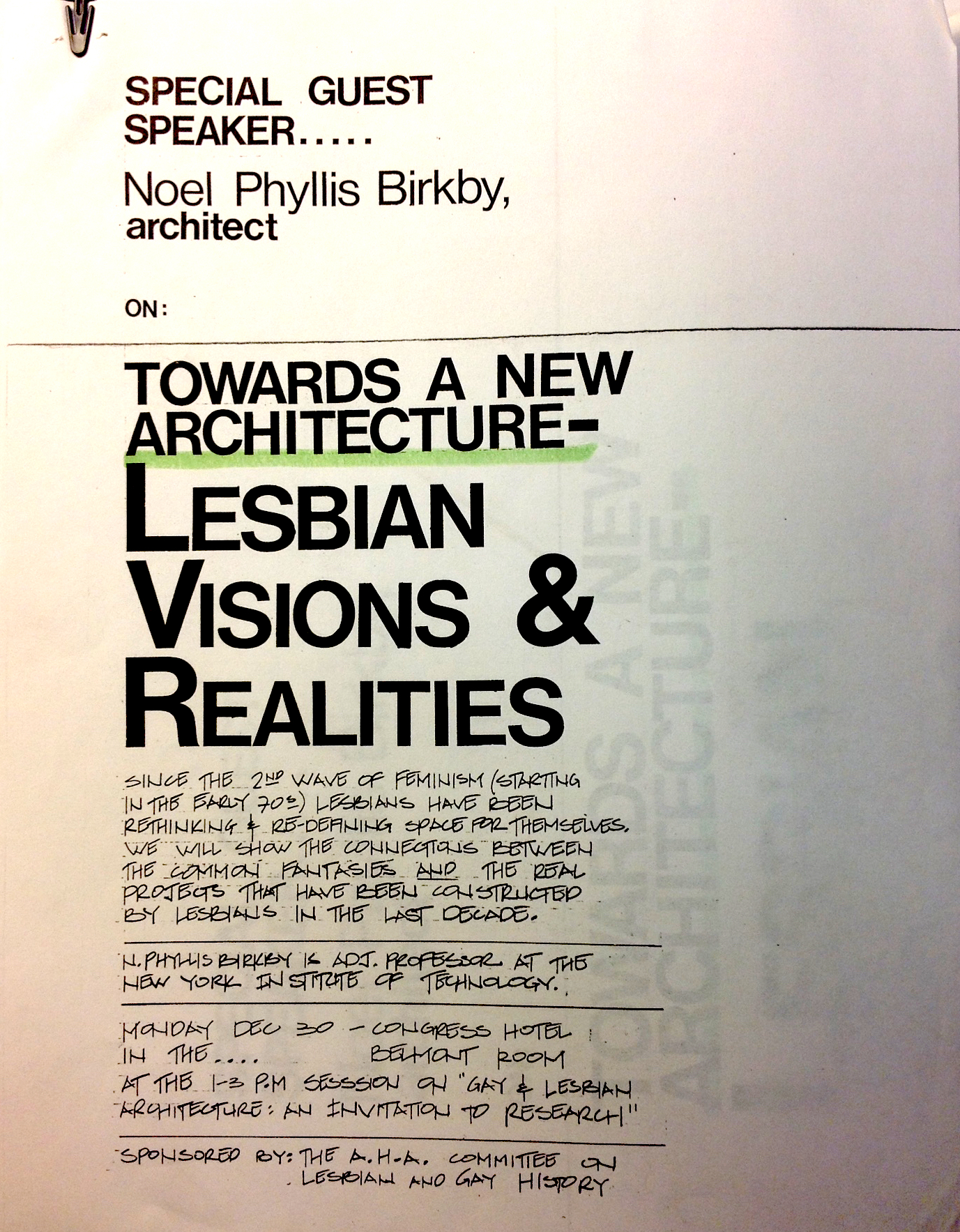
In 1992 Birkby began spending more time at her summer home in Great Barrington, MA. The heady days of meaningful work and feminist activism had long passed. The nation was now gripped by the AIDS crisis. The continuing inaction of the U.S. government around this epidemic engendered righteous anger and spawned massive protests within the LGBT community. Architecture and design were on the back burner as much lesbian activism, at least in NYC, focused on activity related to the devastation of the gay male population resulting from HIV.
Birkby died from breast cancer in 1994 in hospice at Fairview Hospital in Great Barrington. During her final months she was surrounded by her chosen family of friends and comrades. The late Sydney Abbott was the only person present when Birkby passed at age 61.
In 1997, the Sophia Smith Collection at Smith College celebrated Birkby’s work in the exhibition "Amazonian Activity: The Life and Work of Noel Phyllis Birkby, 1932-94.” Attendees included Kate Millett, Sydney Abbott, and other lesbian-feminist activists who wanted to honor this radical American architect and activist who moved the profession forward by challenging its assumptions and rattling its underpinnings, someone we must continue to acknowledge today.
Sources: Material for this article was found in the Noel Phyllis Birkby Papers, Sophia Smith Collection, Smith College, Northampton, MA; The Lesbian Herstory Archives, Brooklyn, NY; and Bertoli, Alberto and Phyllis Birkby. January 01, 1980. "Alberto Bertoli And Phyllis Birkby." In SCI-Arc Media Archive. Southern California Institute of Architecture. http://sma.sciarc.edu/video/alberto-bertoli-and-noel-phyllis-birkby/.
Top image © Saskia Scheffer, 1993
Stephanie Schroeder, a freelance writer based in New York City, has a special interest in feminism, mental health, alternative economies, and creativity. She has written for The Guardian, The Brooklyn Paper, Curve Magazine, 1st Amendment Media, the Lambda Literary Review, and many other publications. Schroeder is the author of the memoir, "Beautiful Wreck: Sex, Lies & Suicide." You can find out more about Schroeder's work on her writing website: www.stephanieschroeder.com.
Correction: A previous version of this article stating that Birkby sold her share in 51 Market Street and moved to her summer home in Great Barrington, MA in 1992 has been corrected. The article has also been updated to show that Birkby died in Fairview Hospital in Great Barrington, not her home, and that the late Sydney Abbott was present at the time of Birkby's passing.

